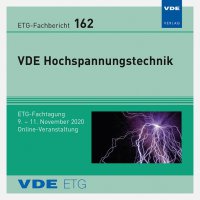Development of a Liquid Silicone Rubber for the application in HVDC Cable Accessories
Konferenz: VDE Hochspannungstechnik - ETG-Fachtagung
09.11.2020 - 11.11.2020 in online
Tagungsband: VDE Hochspannungstechnik
Seiten: 6Sprache: EnglischTyp: PDF
Autoren:
Hussain, Rashid; Hinrichsen, Volker (TU Darmstadt, High-Voltage Laboratories, Germany)
Safarowsky, Oliver; Hegge, Joachim (Momentive Performance Materials GmbH, Germany)
Inhalt:
High voltage direct current (HVDC) power transmission is becoming increasingly competitive to high voltage alternating current (HVAC) power transmission, especially for bulk power transmission over long distances. Nevertheless, in DC insulation systems the electric field distribution is much more complex than in AC systems, since it strongly depends on the electric conductivities of the insulation materials such as cross-linked polyethylene (XLPE), ethylene propylene rubber (EPR) or silicone rubber (SiR). The main issues of standard liquid silicone rubber (AC-LSR) materials are the higher conductivity compared to the used DC-XLPE for the cable insulation and its high tendency of space charge accumulation. In order to develop a DC-LSR that is suitable for HVDC cable accessories different amounts of nanoscale Carbon Black (CB) are incorporated to a standard AC-LSR in this work. In a first step the influence of the CB concentration on the basic dielectric properties, such as conductivity and breakdown strength, are investigated. In addition, the space charge behavior is explored by applying the Pulsed Electro-Acoustic (PEA) method at different temperatures up to 80 °C and field strengths up to 20 kV/mm. The results show in general that by adding the CB nanofiller, the conductivity decreases by two orders of magnitude and is now in the range of already applied DC-XLPE materials, while the DC breakdown strength increases by around 15 % compared to the unfilled AC-LSR. This behavior is explained by the presence of deeper taps introduced by the CB nanoparticles, which could be confirmed by measuring thermally stimulated currents (TSC). Due to the deep traps, homocharges are built up in front of the electrodes, which prevents further charge injection. This phenomenon is confirmed by the results of the PEA measurements for all investigated CB concentrations. In addition, the amount of injected charge is significantly reduced by adding the CB nanofiller. With the help of the applied characterization methods, it is possible to determine an optimal range of CB concentration for the development of a DC-LSR for HVDC cable accessories.


